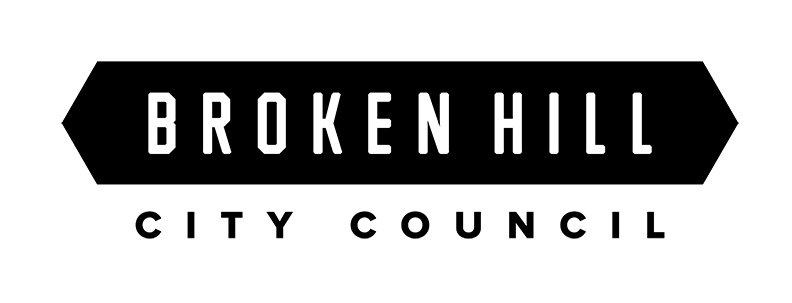Title Page
-
Site conducted
-
Address of property at which the inspection was carried out
-
Registered number of DA or CDC
-
Registered number of CC
-
Development Description
-
Inspection type
- after excavation for, and prior to the placement of, footings
- prior to pouring an in-situ reinforced concrete building element
- prior to covering of the framework for a floor, wall, roof or other building element
- prior to covering waterproofing in a wet area
- prior to covering stormwater drainage connections
- after the building work has been completed and prior to any occupation certificate being issued in relation to the building
- prior to covering of fire protection at service penetrations to building elements that are required to resist internal fire or smoke spread
- prior to covering the junction of any internal fire-resisting construction bounding a sole-occupancy unit, and any other building element required to resist internal fire spread
- as soon as practicable after the barrier required under the Swimming Pools Act 1992 has been erected
- Other
-
Please specify
-
Specific Item/s inspected
-
Date of Inspection
-
Name of Certifying Authority by whom inspection was carried out
- Broken Hill City Council
- Other
-
Please specify
-
Individual certifier who carried out inspection
-
Please specify name and accreditation number
-
Supervising Certifier
-
Individual certifier signature
-
Individual certifier signature (additional)
-
Outcome of inspection
-
Is a reinspection required before work proceeds?
-
What items or work needs to be addressed?
-
Work may proceed to the point of the next mandatory inspection.
Refer to the list of inspections provided to you previously.
Inspection notes
Preliminary
-
Class(es) of building being inspected
- 1a
- 1b
- 2
- 3
- 4
- 5
- 6
- 7a
- 7b
- 8
- 9a
- 9b
- 9b
- 10a
- 10b
- 10c
-
Is a contract for the certification work in place?
-
Has notice of commencement of work been given?
-
Has evidence of HBCF insurance been provided?
General
-
Are there any special hazards on the site?
-
Specify
-
Have controls and/or SWMS been appropriately provided?
-
Do not enter the site or continue the inspeciotn until it is safe to do so. Report the issues to the site manager.
-
Does the development generally appear to be being carried out accordance with the development consent?
Inspection checks
-
Inspection type
- after excavation for, and prior to the placement of, footings
- prior to pouring an in-situ reinforced concrete building element
- prior to covering of the framework for a floor, wall, roof or other building element
- prior to covering waterproofing in a wet area
- prior to covering stormwater drainage connections
- after the building work has been completed and prior to any occupation certificate being issued in relation to the building
- prior to covering of fire protection at service penetrations to building elements that are required to resist internal fire or smoke spread
- prior to covering the junction of any internal fire-resisting construction bounding a sole-occupancy unit, and any other building element required to resist internal fire spread
- as soon as practicable after the barrier required under the Swimming Pools Act 1992 has been erected
- Other
-
Please specify
-
The primary purpose of this inspection is to establish that the building has been set out in accordance with the development consent, CC, the endorsed plans, and that footing excavation is in accordance with the engineer’s design.
-
Is the set out of the building consistent with the approved documents?
-
Is the location of the footings as per the approved documents?
-
Is the size of the footing excavation as per approved documents
-
The work has been carried out or prepared in a manner that appears to be in accordance with the relevant requirements of the BCA
-
The primary purpose of this inspection is to the determine the extent to which the reinforced concrete building element complies with the BCA to withstand all loads.
-
Is the set out of the building consistent with the approved documents?
-
Does the excavation area accord with the approved documents?
-
Is the size and location of steel reinforcement or mesh appropriate?
-
Is the cover to steel reinforcement or mesh acceptable?
-
Are overlaps of reinforcing at junctions provided correctly?
-
If reinforced element is stepped, is the gradient change appropriate?
-
Do any penetrations such as plumbing still allow the element to perform as designed and withstand relevant loads?
-
Is a damp proof barrier (e.g., membrane) installed/provided correctly?
-
Have any step downs in the steel reinforcement or mesh been executed as designed?
-
Levels and set out – is the proposed height above ground level consistent with the approved plans, together with consent conditions?
-
The primary purpose of this inspection is to determine the extent to which the framework for a floor, wall, roof or other building element complies with the BCA to withstand all loads.
-
Is the layout and configuration of the building and construction consistent with the approved documents?
-
Size and span of timbers, stress grading of timbers; durability of timbers all as per BCA/documentation?
-
Are loads on members and supports to members provided as appropriate?
-
Is notching and penetrations of framing elements detailed correctly?
-
Is any cavity width appropriate?
-
Are flashings and dampproof courses provided and finished correctly?
-
Is the provision of articulation joints in brickwork correct?
-
Is bracing provided as specified and installed in a compliant manner?
-
Is the location, fixing and correct type of wall tie installed?
-
Is the location, fixing and correct type of Tie down installed?
-
The primary purpose of this inspection is to check the waterproofing membrane installation and components of internal wet areas. Waterproofing is a critical element in a building and is required to protect the structure and maintain the amenity of the occupants, by preventing water penetrating behind fittings and linings and into concealed spaces.
-
Is the location and type of wet areas consistent with the approved documents?
-
Is the waterproofing of wet areas consistent with the approved documents?
-
Has a waterproofing membrane been installed to the wet areas and to the extent required?
-
Is the substrate material appropriate for its intended use?
-
Is the waterproofing membrane system appropriate for its intended use?
-
Is the waterproofing membrane system installed in accordance with the manufacturers’ specification/ requirements as far as can be ascertained?
-
Has the waterproofing membrane been installed in a good and competent manner e.g. no observable holes or other damage to the waterproofing membrane?
-
The primary purpose of this inspection is to establish if the stormwater collection system has appropriate drainage connections.
-
Is the stormwater drainage connection/s consistent with the approved design?
-
Are stormwater drainage connections visible and able to be inspected?
-
Are the pipe sizes, locations and gradients consistent with the approved design?
-
Are the type of pipes consistent with the approved design?
-
Where an on-site stormwater drainage system is installed are the works as executed including any pits consistent with the design?
-
The primary purpose of this inspection is to establish if the completed building is suitable for occupation or use in accordance with the development consent and in accordance with its BCA classification, i.e. to determine whether the building meets the required levels of health, safety, amenity and sustainability for any occupants of the building.
Completion
-
The structure of the building is complete
-
The building has a fully completed envelope.
-
The building includes all facilities and features required by the BCA and these are all operational.
-
The building is no longer a building site.
-
Given the above, is the building (or part) subject of the inspection completed?
-
Are there any observable matters to suggest that requirements of the regulations that need to be complied with prior to issuing an OC have not been met?
Consistency
-
The design, configuration and layout of the building is consistent with the approved plans.
-
The external appearance of the building is consistent with approved plans.
-
There is no unauthorised work on site.
-
Is the building consistent with the development consent and the CC?
-
Are there any preconditions of the development consent to the issuing of an OC that need to be verified on site?
-
Are these preconditions met?
-
Are there BASIX commitments that are required to be monitored that need to be verified on site?
-
Have the BASIX requirements been met, including visual checks of any documentary evidence relied on for those matters?
-
Has building work been constructed in accordance with a performance solution report that accompanied a CC for the building?
-
Are there any observable matters, as far as practicable, to indicate that the building is not suitable for occupation and use in accordance with its classification under the BCA (note: not all BCA matters will be observable)?
-
Are there any observable issues with the structure, such as cracking, deflection, departure from design, or other obvious defects.
Fire Resistance
-
Are any building elements (including lightweight construction) required to be fire-resisting are sound and in accordance with approved plans?
-
Are external wall construction and materials in accordance with approved plans e.g. non-combustible and fire-resisting as required?
-
Reasonable visual checks have been carried out regarding any fire resistance or bushfire protection measures, including visual checks of any documentary evidence relied on for those matters.
-
Barriers, handrails and fall prevention provided and installed.
-
Smoke alarms installed and working
-
Are there any observable issues with the weatherproofing of the external envelope of the <br>building?
-
Does the building and units include the required sanitary, laundry and kitchen facilities?
-
Is light and ventilation in accordance with the approved plans?
-
Photos of work as inspected
-
General notes
Evidence used
-
Tick each type of evidence used to decide the findings of fact and to support the decision recorded in this report.
-
Visual inspection of work/building elements
-
Measurement of work/building elements/materials
-
Comparison to approved documents (plans/specifications)
-
Comparison to BCA deemed-to-satisfy provisions
-
Comparison to BCA referenced documents/standards
-
Interview of person(s) who apparently carried out the work
-
Inspection and recording of other documentation (eg installation certificates, chain-of-custody documents,etc)
-
Other
-
Provide details










